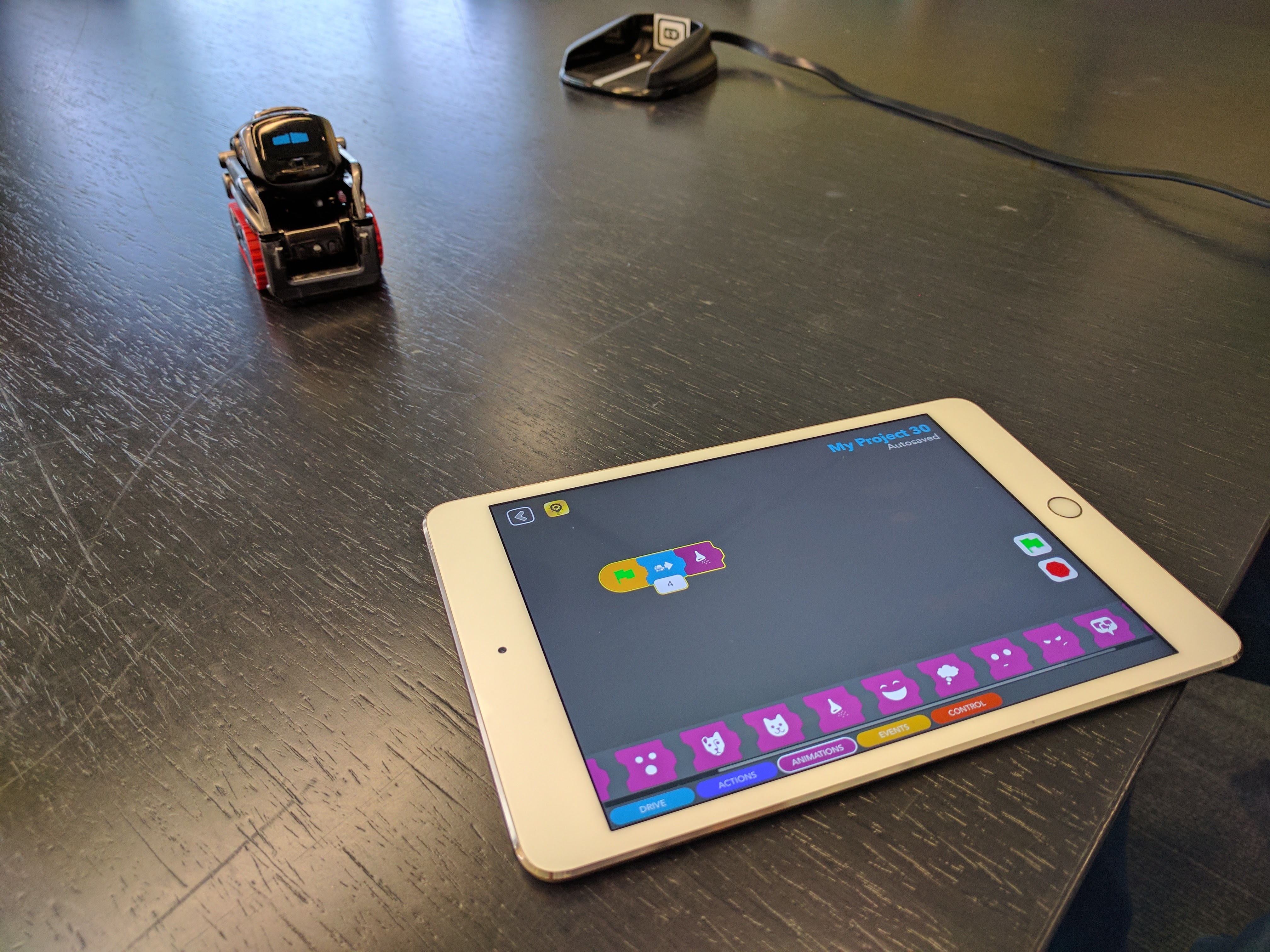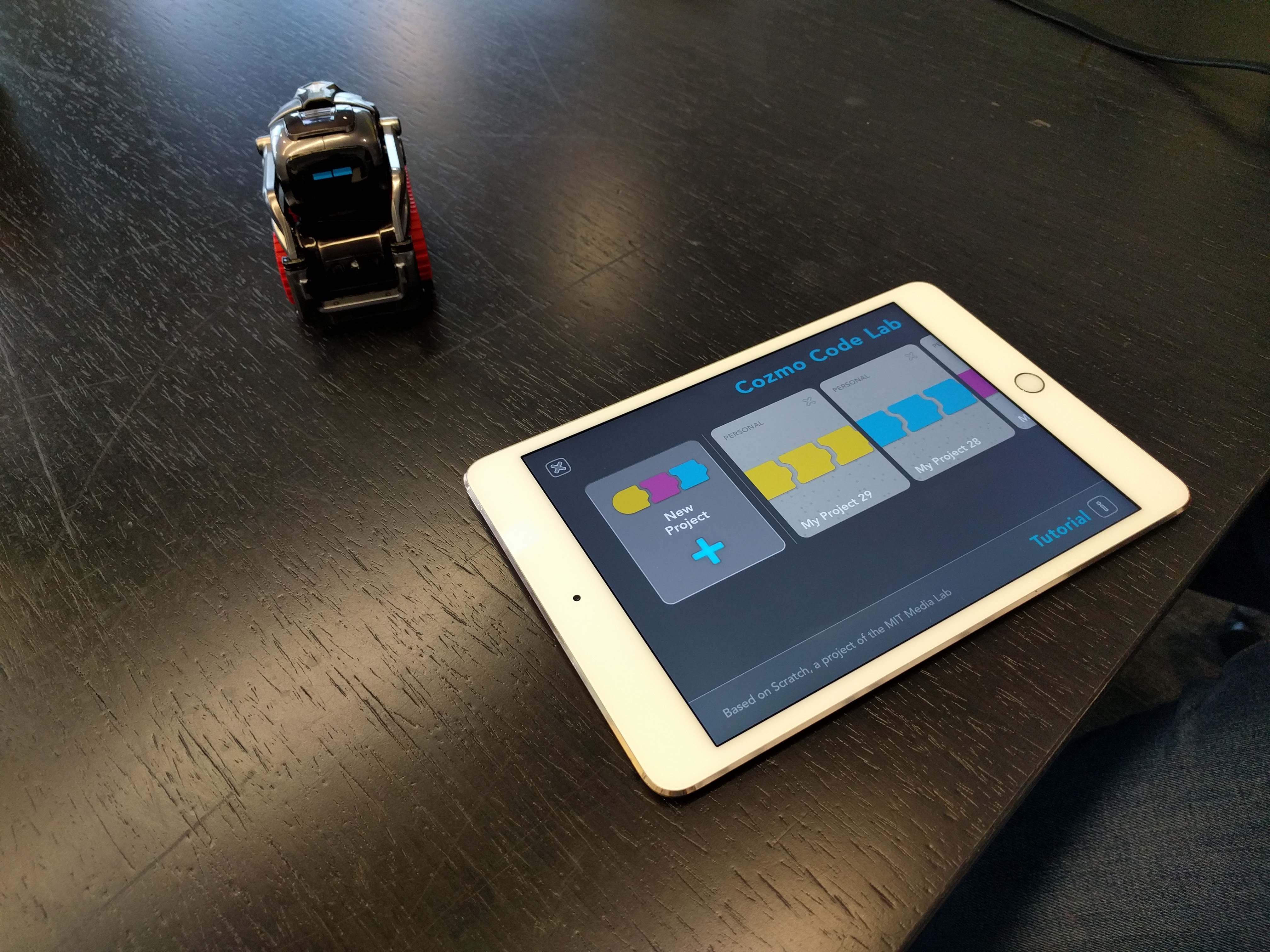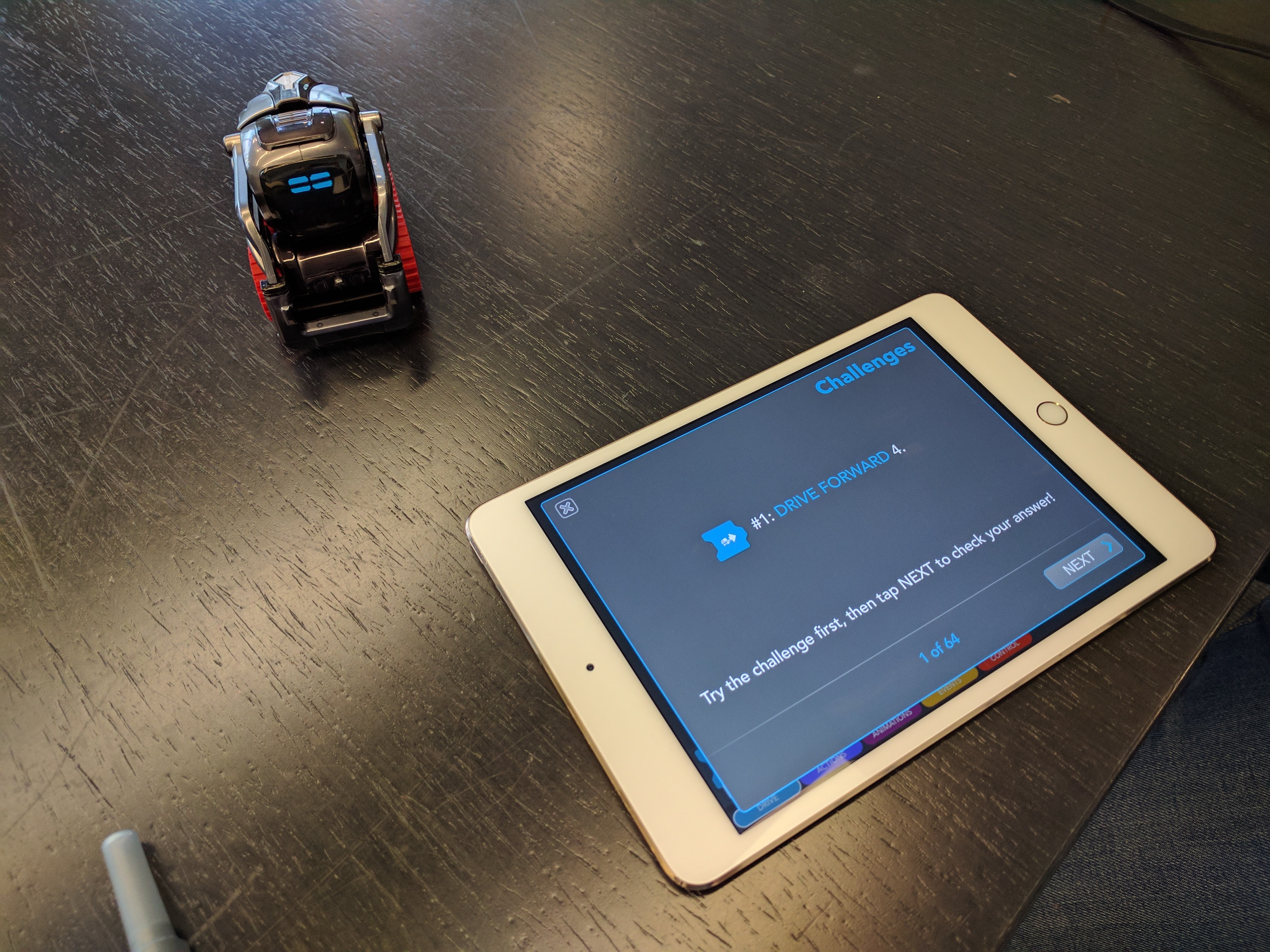
To that end, Anki announced Code Lab, a visual programming feature built into Cozmo’s companion app for smartphones and tablets, on Monday. Using Code Lab, kids can reorder sequences of digital blocks to create basic programs — and learn basic robotics along the way.
“Everything we do at Anki is in an effort to advance the state of robotics, whether that is kids learning coding for the first time, or Ph.D. students solving complex computer vision challenges in a lab with Cozmo,” Boris Sofman, CEO and cofounder at Anki, said. “With the launch of Code Lab, Cozmo now helps kids develop the logic and reasoning skills that programming requires.”
Code Lab follows on the heels of Anki’s software developer kit, which lets hobbyists tap into Cozmo’s hardware using Python. Hanns Tappeiner, Anki’s president and co-founder, sees it as an evolutionary step toward an easier-to-use, kid-focused STEM platform.
“Everything you can do in Python you can do in Coding Lab, and vice versa,” he told Digital Trends. “Kids as young as six have been able to [use it]. We’ve made it really simple.”
Code Lab’s language is designed on Scratch, the sprite-based language developed by the Massachusetts Institute of Technology Media Lab. Kids use four different categories of blocks, including movements (like forward and backward turns), actions (like changing lights and saying short phrases), events (like reacting to a smile or frown), and animations (like a sneeze) to program Cozmo. A series of tutorial-like challenges teach the tool’s fundamentals, and a second, substantially more advanced mode launching later this year will add support for math functions and other features.

In a demo ahead of Code Lab’s launch on Monday, Tappeiner walked Digital Trends through the interface’s basics. It’s largely a drag-and-drop affair. A persistent, expandable menu houses programming blocks depicting Cozmo’s capabilities with colorful iconography. Publishing a program is easy as pairing together at least two blocks and tapping a green “play” icon — a “move forward” and a “move right” command triggers Cozmo to inch forward and rightward, for example.
Special categories of blocks allow for slightly more complicated routines, like a facial recognition program that has Cozmo roam around a plastic cube when it recognizes a cube. But Sofman thinks Code Lab’s real appeal is in its simplicity.
“We now have a powerful tool that gives anyone interested in learning to code a robot the opportunity to unleash their creativity,” he said. “There’s simply no consumer robotics platform available like Cozmo.”
Code Lab is available as a free upgrade for existing Cozmo owners, and launches this week on iOS and Android.





